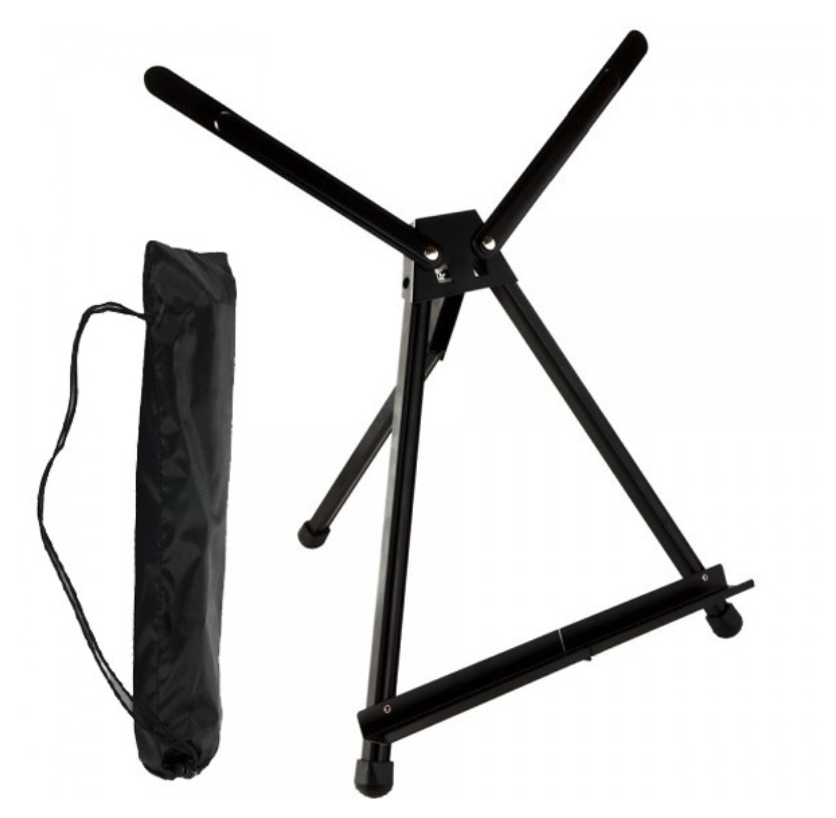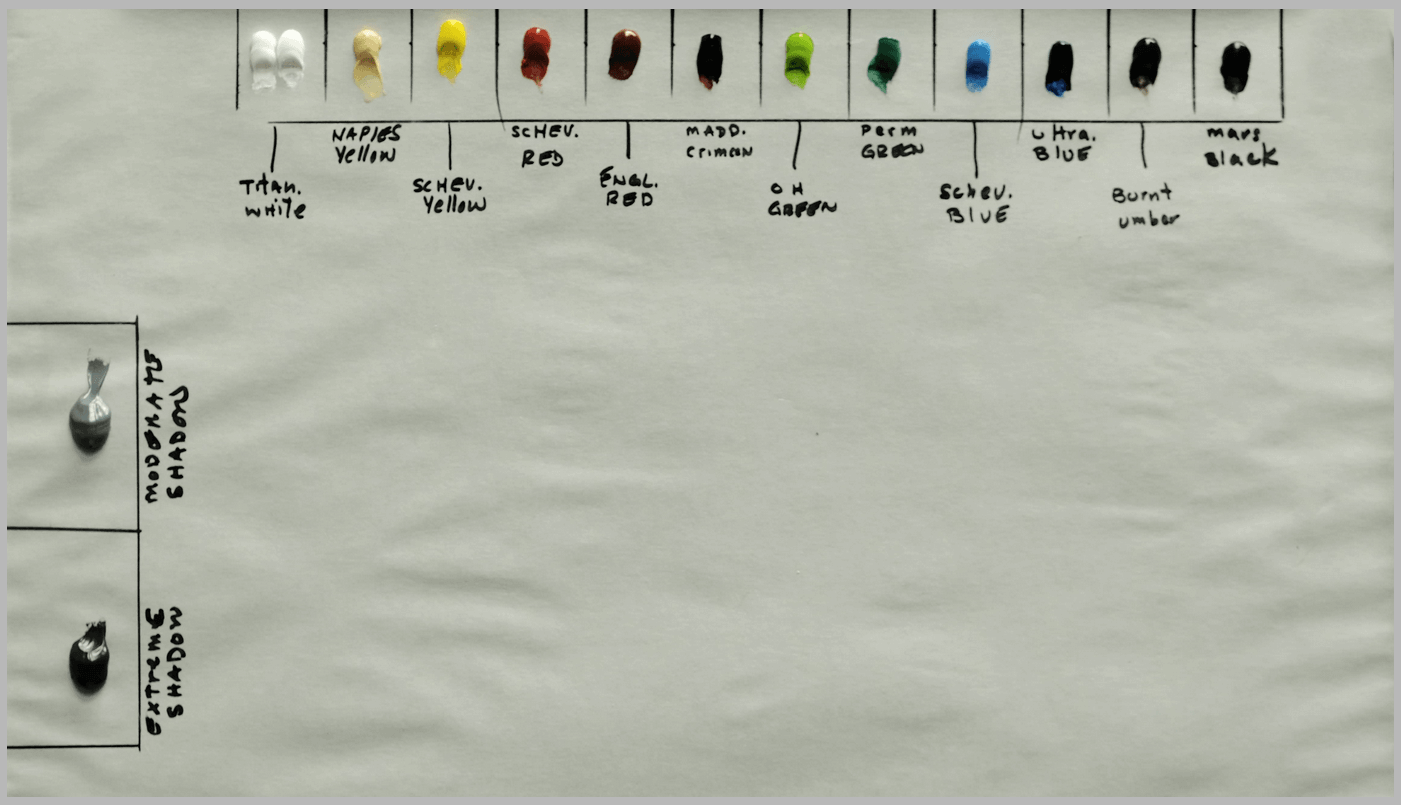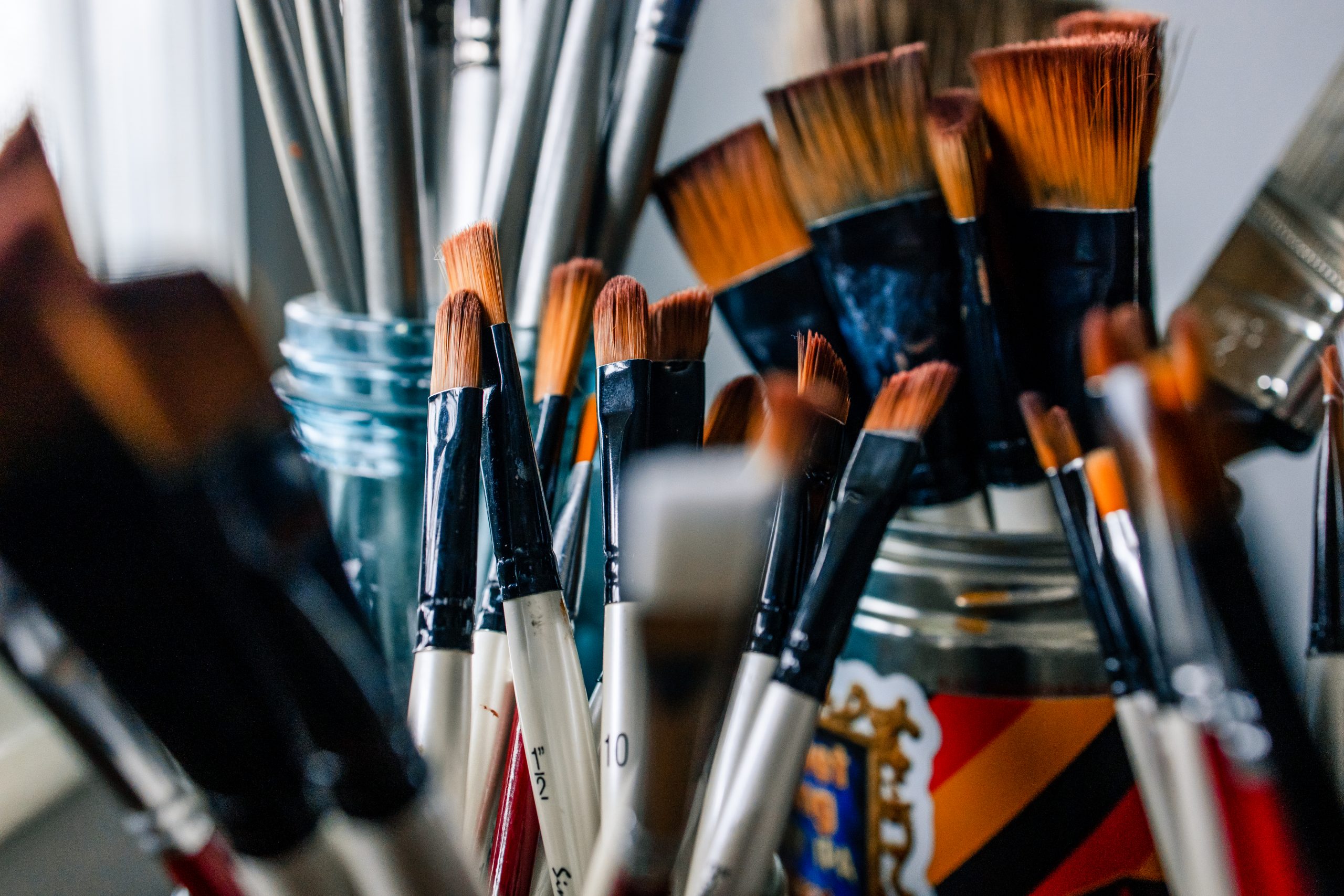
There are so many different oil painting supplies out there, but for beginning artists, there are only 5 important things you need to have! Photo by Natalie Runyon
Have you ever been overwhelmed by the huge variety of oil painting supplies found at art stores?
A beginner artist might wonder which colors to start with and how many tubes of paint to buy. What kind of brushes do they need to buy? Do they need linseed oil? And what about canvas?
There are really only five basic oil painting supplies you need to start painting. So keep reading to learn what art supplies a new artist needs in order to start oil painting!

Choosing the right oil painting materials to start with doesn't need to be complicated.
What Oil Painting Supplies Do You Really Need to Get Started?
When you are just beginning as an artist, you don’t need every fancy tool or brush. You just need the basics that will help you get started on your artistic journey.
The five oil painting supplies you need:
1. Oil paints
2. A Palette
3. Paint brushes
4. A canvas
5. An easel
6. (OPTIONAL) A medium (like linseed oil)
Let's go through each of the essential oil painting supplies you need one by one.
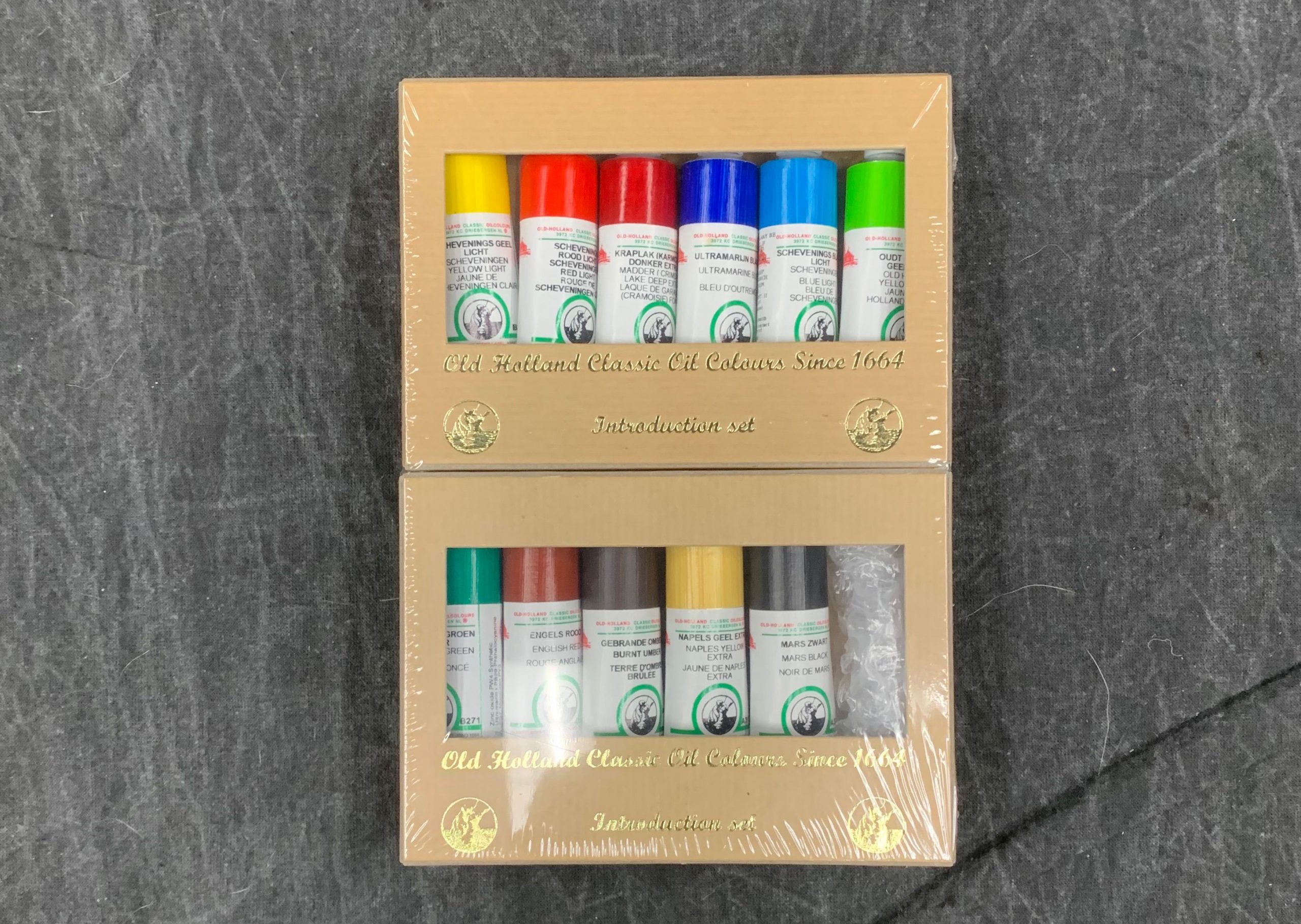
Choose high quality oil paints in order to start your education off properly! This Old Holland set is the palette that Evolve students begin with.
1. A Set of Oil Paint Colors
Perhaps the most important item in needed as part of your oil painting supplies are your oil paints.
In order for a palette to be effective it has to have the primary colors. You don’t have to have every color available on the market, but it is important to have a warm and cool version of each color on your palettes.
As you begin, the following twelve colors should be found on your palette:
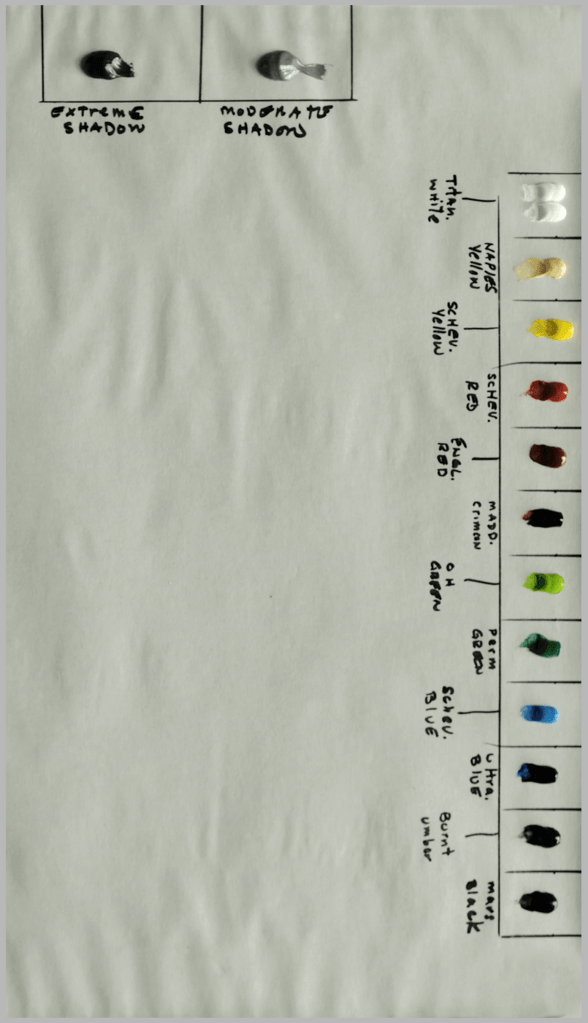
The 12 colours Evolve recommends
#1 - White
#2 - Naples Yellow
#3 - Scheveningen Yellow
#4 - Scheveningen Red
#5 - Terracotta or English Red
#6 - Alizarin Crimson
#7 - Old Holland Yellow Green
#8 - Phthalo Green
#9 - Scheveningen Blue
#10 - Ultramarine Blue
#11 - Burnt Umber
#12 - Mars Black or Ivory Black
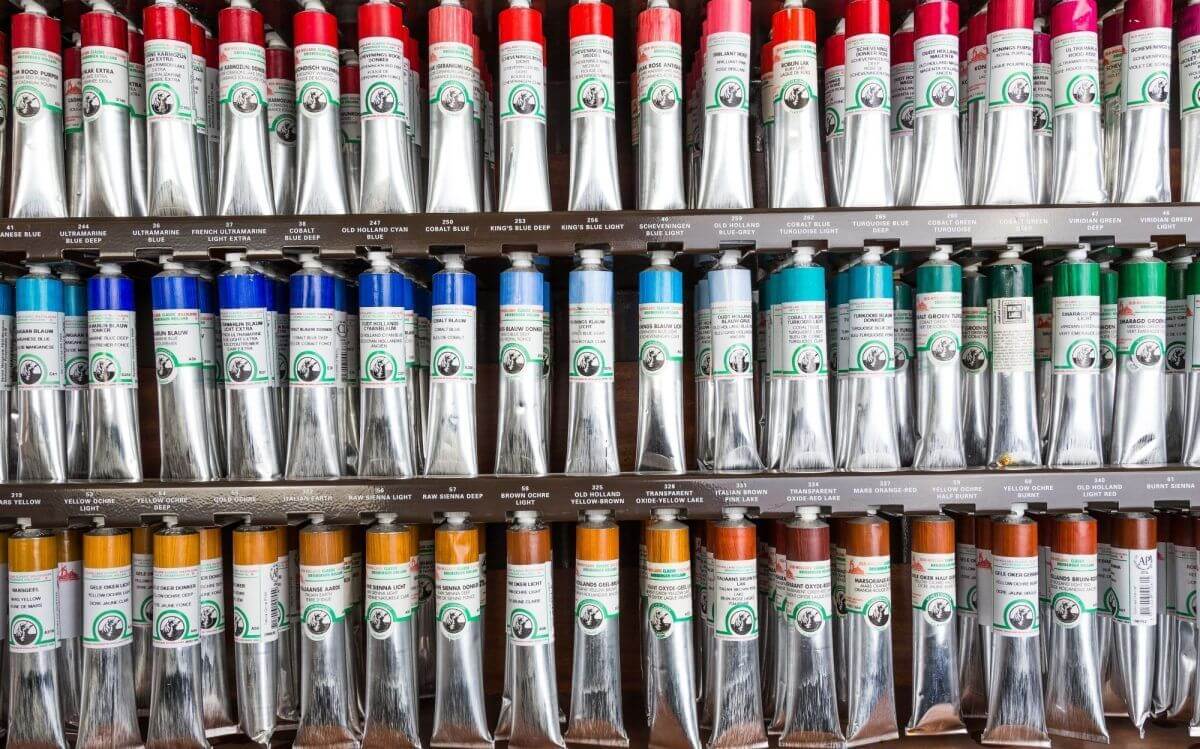
Oil Paints by Old Holland
Should I Buy Lower Quality Oil Paints as a Beginner?
As a student, you should be working with the best material you can get. If you're working with a lower grade material, there will be shortcomings in the paint.
Reasons why low quality paint is not good for beginners:
- A lower quality paint may not cover the canvas well.
- You may get areas where it kind of streaks or shows through.
- If you are working with a low grade material you'll never know whether the fault is with the material or if it's with you and your technique.
If you're using a high grade material and you have a problem with applying your paint, you know the issue is with the artist, not the material. So you're eliminating any potential confusion by using a high grade paint and medium.
This is why it is recommended to use high quality oil painting supplies, so if there's ever a problem you know that it's not the material's fault. At Evolve, we recommend Old Holland paints.
Remember, quality paint won’t make you a better artist, but it certainly won’t hold you back. Read more about that here.
2. A Palette for Mixing Paint
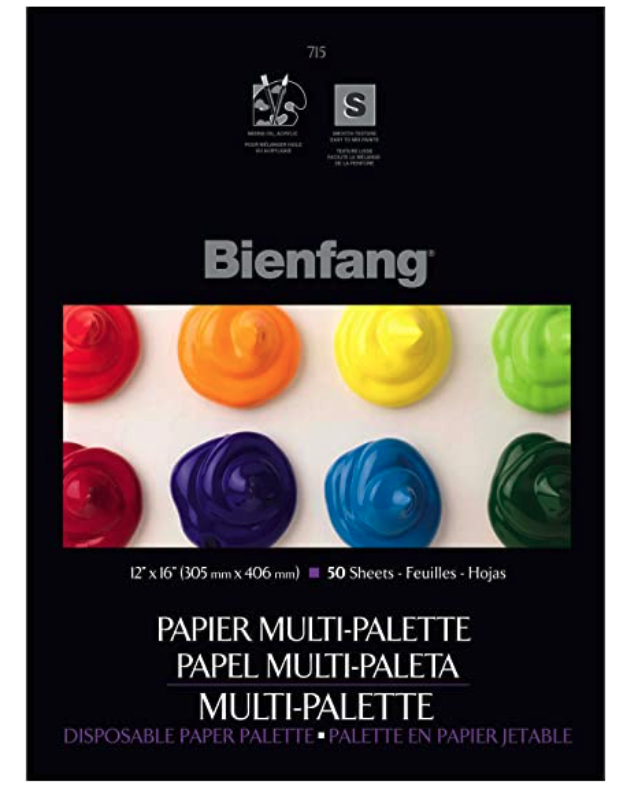
Palette paper is an convenient supply to add to your oil painting materials list.
Once you have your oil paints, you’ll need a palette for mixing those paints together. It's definitely an essential when it comes to oil painting supplies.
A mixing palette can be a primed wood panel, glass, or piece of wax paper as a physical item. Most art stores sell pads of palette paper suitable for oil paint.
Bienfang palette paper does a great job as a disposable painter's palette. You can check out that product by clicking here.
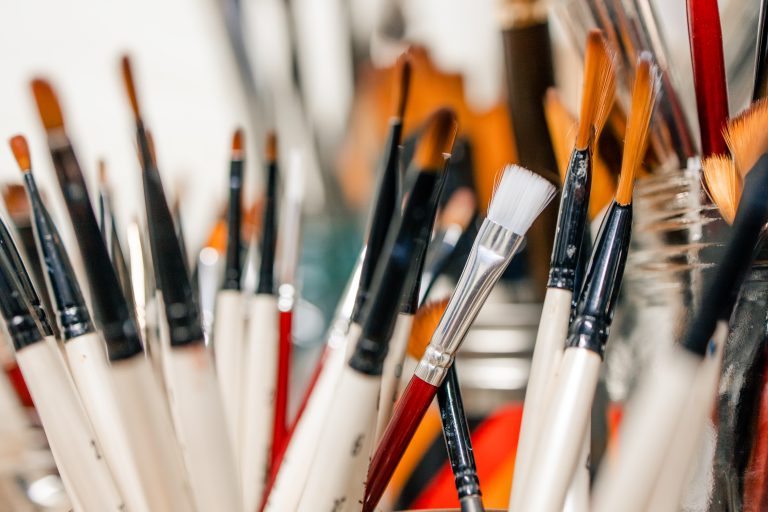
Choosing the right brush is important for new artists, but can be simplified. Photo by Natalie Runyon
3. Choosing the right brush
Shopping for oil painting materials can be a challenge, especially when there are hundreds of styles and sizes of brushes for oil painting. It's best to start painting using two number 12 Filbert brushes (one for lights and one for shadows).
A Filbert is a type of brush which has a kind of curved tip so it almost looks like a cat's tongue. As an all purpose brush you're not going to get a better brush because you can work into tight corners and you can also cover large areas.
For more information on different types of brushes for oil painting, check out this article.
4. Choosing a Canvas to Paint on
There is a huge variety of canvas types available for artists. It's best as a beginner artist to avoid using large canvases that take too much time to fill.
A set of ten 9" x 12" cotton canvases will serve you well as you get started with oil painting.
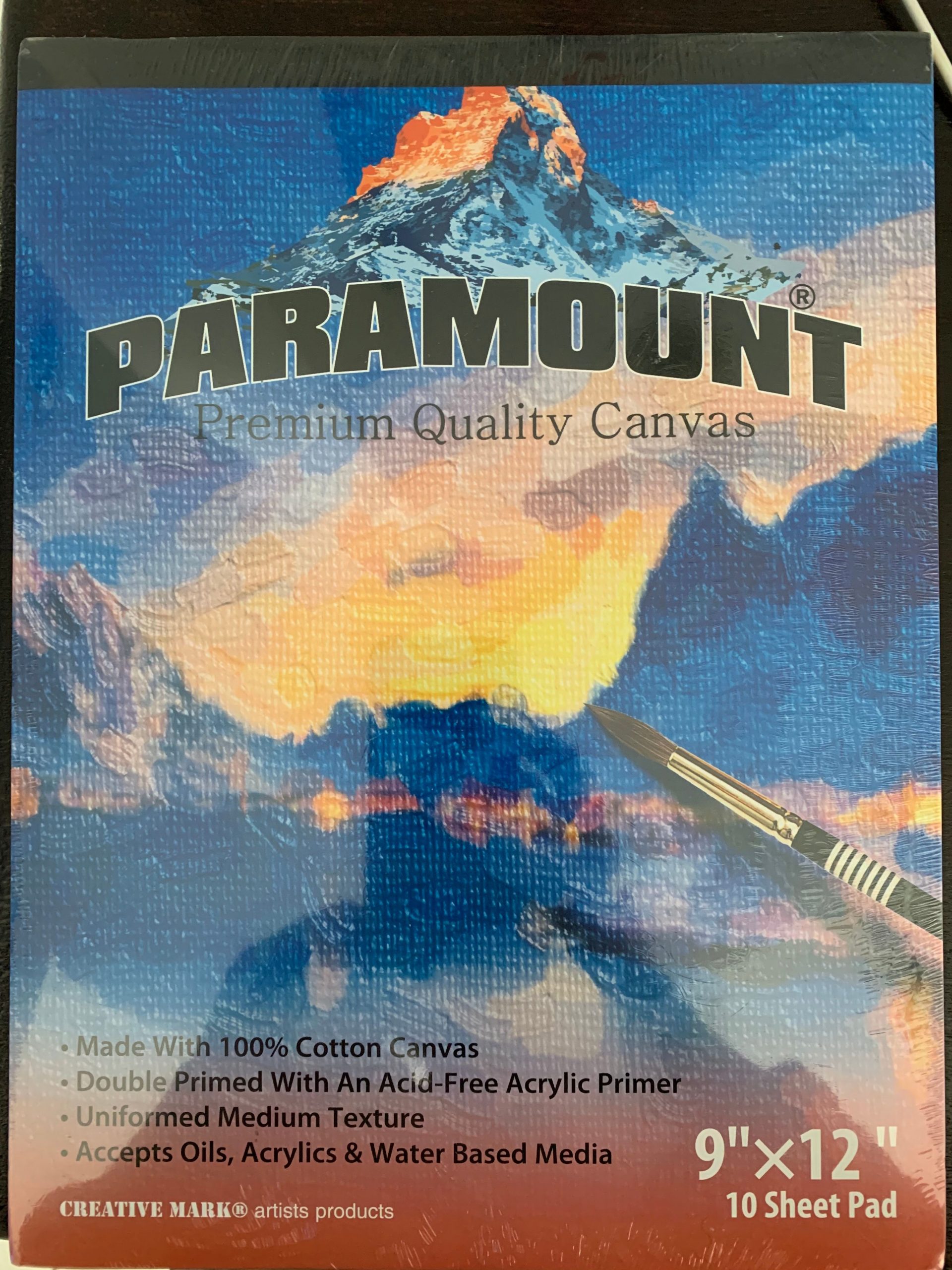
Paramount premium quality canvas - a great addition to any oil painting supplies list.
As you advance as an artist you'll discover all sorts of different canvases.
We recommend a linen or cotton canvas, which are smooth and easy to use.
One quality brand to start with is the Paramount premium quality canvas. It is doubled primed and acceptable for oils and acrylic paint.
5. Do I Need an Easel?
When you paint you should always work on an easel, even if it's a tabletop easel.
It's not a good thing to work with your painting laying flat as it affects your perspective of your work. That said, you want something sturdy enough that it's not going to slide while you're working.
The easels we recommend to beginner students is the Martin Angelina Table Top Easel sold for about $20 on Amazon.
Once you know you want to continue with your art and are looking for an easel upgrade, an H-frame easel is a good investment.
The easels we use in the studio are Weber Avanti 2 Steel Studio Easels (roughly $250, but watch for them to go on sale). The SD STUDIO DESIGNS Deluxe Easel is a more affordable and high quality alternative.
6. Optional Oil Painting Materials: Linseed oil or Medium
When it comes to oil painting supplies, is linseed oil or others mediums essential?
Like canvas, the subject of medium is a conversation that could go on for years.
Most high quality oil paints can be used straight out of the tube, with no medium necessary. However, you may find that while using some of these paints, they can be heavily pigmented and therefore, quite dense.
Although mediums are not necessary oil painting beginner supplies, to help the paint move a bit easier, we recommend that you use as little medium as a vehicle for the paint.
For the most part, paint is made with linseed oil. Paint makers take pigment, grind it up, and mix linseed oil into it.
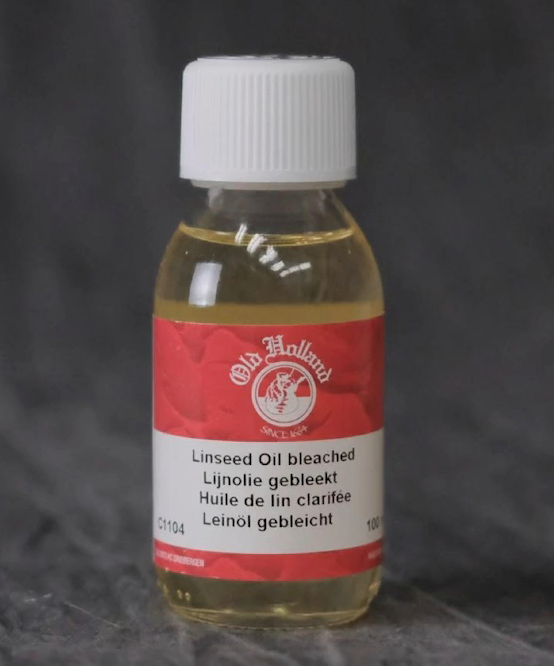
Evolve students are sent linseed oil in the oil painting supplies they receive.
And if that's what your paint is made from and you want to thin your paint down, then you want to use more linseed oil.
It’s always good if you can use cold-pressed linseed oil (it’s going to be two or three times the price of regular linseed oil but should still be under $15 for a bottle).
Cold-pressed linseed oil is the highest grade of linseed oil you’re going to get. This way you’re going to get used to working with good material.
FAQs: Oil Painting Supplies for Beginners
The five oil painting supplies you need are:
- A set if 12 oil paints
- A palette
- Paint brushes
- A canvas
- An easel
No, it's not a good idea to use low quality paint as a beginner.
- A lower quality paint may not cover the canvas well.
- You may get areas where it kind of streaks or shows through.
- If you are working with a low grade material you'll never know whether the fault is with the material or if it's with you and your technique.
If you're using a high grade material and you have a problem with applying your paint, you know the issue is with the artist, not the material.
At Evolve, we recommend Old Holland paints.
A mixing palette can be a primed wood panel, glass, or piece of wax paper as a physical item. Most art stores sell pads of palette paper suitable for oil paint.
It's best to start painting using two number 12 Filbert brushes (one for lights and one for shadows).
A Filbert is a type of brush which has a kind of curved tip so it almost looks like a cat's tongue. As an all purpose brush you're not going to get a better brush because you can work into tight corners and you can also cover large areas.
A set of ten 9" x 12" cotton canvases will serve you well as you get started with oil painting.
It's best as a beginner artist to avoid using large canvases that take too much time to fill.
We recommend a linen or cotton canvas, which are smooth and easy to use.
When you paint you should always work on an easel, even if it's a tabletop easel.
Once you know you want to continue with your art and are looking for an easel upgrade, an H-frame easel is a good investment.
Most high quality oil paints can be used straight out of the tube, with no medium necessary.
Although mediums are not necessary oil painting beginner supplies, to help the paint move a bit easier, we recommend that you use as little medium as a vehicle for the paint.
For the most part, paint is made with linseed oil. And if that's what your paint is made from and you want to thin your paint down, then you want to use more linseed oil.
Final Thoughts on the top 5 Oil Painting Supplies
There you have it! In this post, we've laid out in detail the the short list of oil painting materials you need to get started. Keep it simple and invest in quality oil paints to get you started. Then, spend your time and focus on practicing and learning all you can about oil painting!
If you want to check out the oil painting materials all Evolve students receive (at no extra cost!) when they start the program - click here!
FREE MASTERCLASS:
The 4 Part Framework to Develop Artistic Excellence in 12 Months

